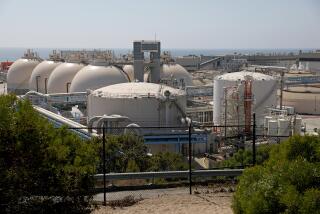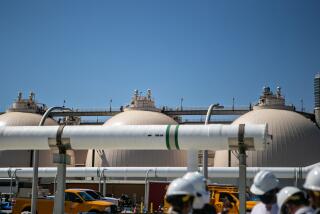Environment: Hyperion Plant Discharge
- Share via
In your article “Shifting Tides: A Healing Process” [April 27], a number of errors were included by the writer, Susan Woodward. Additionally, she seems to have chiefly spoken to Heal the Bay workers without researching the very substantial amount of good scientific work available. Instead of a rounded article, it appears as a very slanted piece that apparently mirrors Woodward’s particular bent.
She notes that the Hyperion Treatment Plant was dumping 400 million to 500 million gallons per day of sludge five miles offshore. The sludge was being diffused from a pipeline seven miles offshore and was about 2 million to 4 million gallons per day of digested and screened material with from 0.3% to 0.5% solids.
There is a basic confusion in the article between effluent and sludge. Later in the article, the effluents diffused off White’s Point by the Los Angeles County Sanitation Districts are mentioned. It is stated that this is diffused seven miles offshore. Actual diffusion is about one mile offshore, since depths and currents are very substantial at their point of release. Again, the effluents rather than sludge are being talked about.
It is stated that secondary treatment has drastically reduced the amount of suspended solids sent into the ocean. In point of fact, the amount of secondary treatment has not changed, as is stated on the next page. The difference has come from the addition of coagulants, which remove more of the solids in the sedimentation tanks.
Woodward should also talk to the scientists at the Hancock Foundation of the University of Southern California, who have evaluated the beneficial effects on the bay of nutrients like nitrogen, phosphorous, carbon, silica and Vitamin B-12 found in the waste waters. We no longer have perennial streams bringing nutrients to such waters, so the waste waters can be beneficial.
Lastly, the whole ball of wax needs to be looked at in any project. About four to six square kilometers of ocean bottom were affected by the previous sludge discharge. At least that many square kilometers of our land area are now being affected by on-land disposal, with little hope of dilution of contaminants. Also, we have increased energy use by many times at Hyperion using fossil fuels, and we transport wet sludge many miles, leading to even more air pollution.
Air pollution is of the order of seven pounds per person per day, with the amount to the ocean from sludge being of the order of 0.2 pounds per person per day. To take sludge out, we increase air pollution, which has always had the greatest negative impact upon oceanic resources. Let’s try to look at the overall picture.
WILLIAM F. GARBER
Garber retired in 1985 as assistant director of the Los Angeles Bureau of Sanitation.






